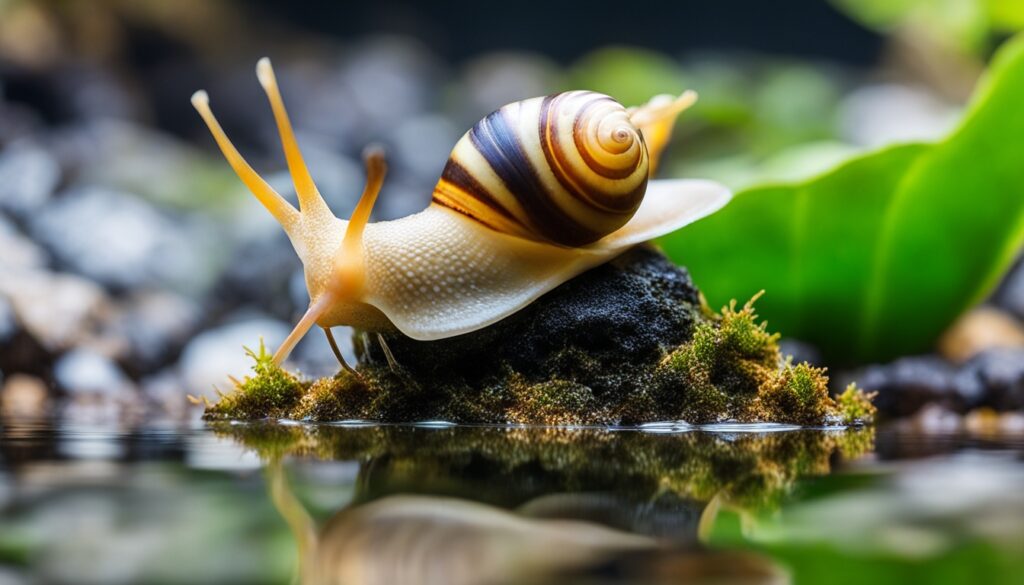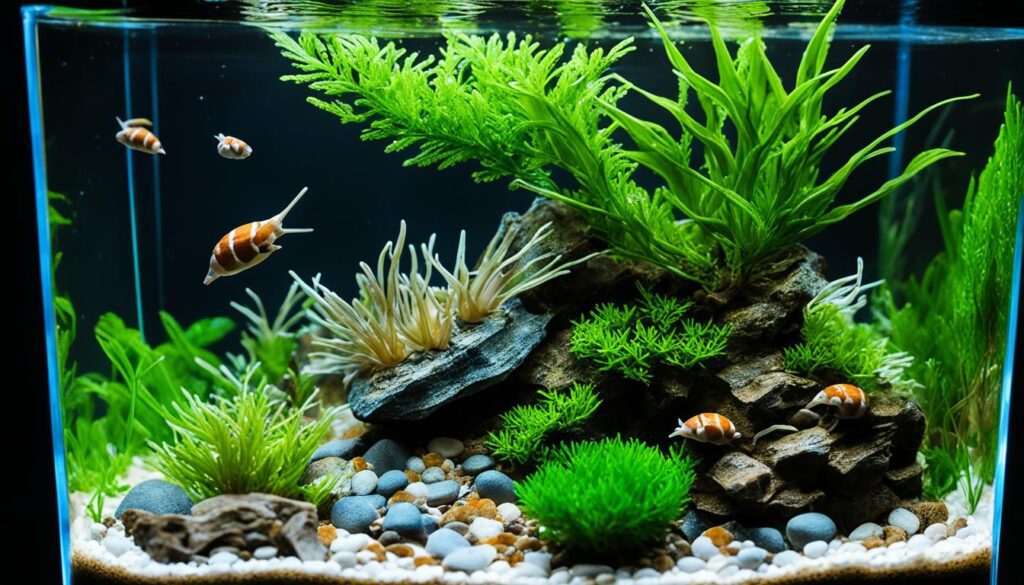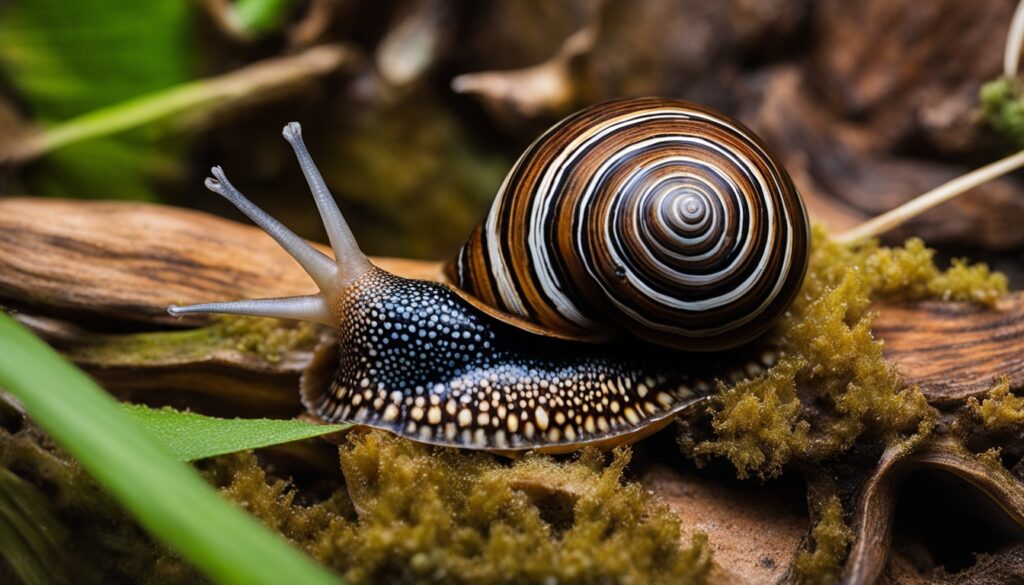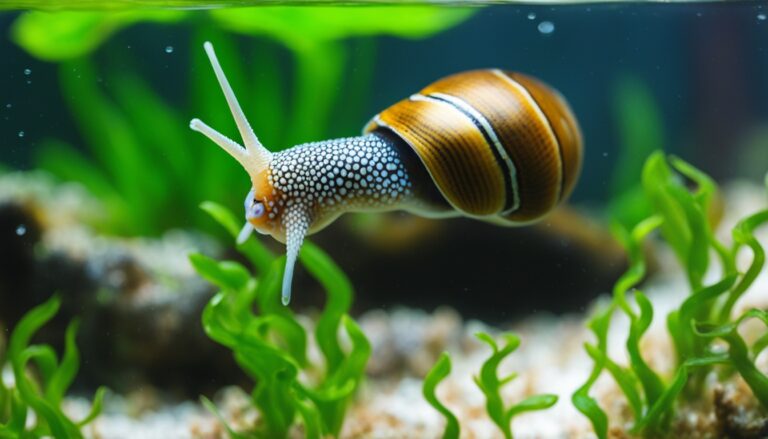I love adding Assassin Snails, also known as Anentome helena, to my freshwater tanks. These little guys are not only fascinating hunters but also sport some pretty cool-looking shells. They start out at about 3/4 of an inch but can grow up to 3 inches with the right care.
When it comes to their tank, I stick to the rule that bigger is better. A 30-gallon tank gives Assassin Snails plenty of space to thrive. Keeping the water conditions just right is key—a pH of 7.0 to 8.0 and temperatures between 75-80°F is ideal. Under these conditions, they can live up to five years, although most tend to live around two.
I also love having a variety of creatures in my tanks, and Assassin Snails play well with others. They coexist nicely with most fish and some invertebrates. I’ve successfully kept them alongside Cory and Otocinclus Catfish, shrimp, and even freshwater clams. By following these care tips, you can ensure your Assassin Snails stay happy and healthy.
Assassin Snail’s Natural Habitat and Adaptations

The Anentome helena, also known as the assassin snail, comes from Southeast Asia’s diverse ecosystems. This area is famous for its wide range of freshwater snail habitats. These habitats are perfect for the assassin snail’s carnivorous nature. They live in slow-moving or still waters, where they can use their snail control skills well.
The tropical climates of Thailand, Malaysia, and Indonesia are ideal for these snails. They have plenty of aquatic invertebrates to eat, supporting their predatory lifestyle.
Origins and Distribution in Southeast Asia
Assassin snails come from Southeast Asia’s freshwater areas. They live in rivers, lakes, and ponds with sandy bottoms. This lets them blend in and ambush their prey effectively. Knowing where they come from helps aquarium owners create the right environment for them.
Behavioral Characteristics
Assassin snails are not your typical aquarium snail. They are hungry snail-eaters that help control pests. They hunt by hiding in the sand with just their siphon showing. This way, they can breathe and surprise their prey, like worms and other snails.
They are popular among aquarium fans for their pest control skills.
Physical Adaptations for Survival and Hunting
The assassin snail’s body shows its hunting skills. It has a siphon to find prey and an operculum for defense. Their shells, up to an inch long, help them dig and hide. The radula, a tongue-like organ, is key for eating, letting them scrape and eat their prey.
In summary, the assassin snail’s unique traits make it interesting to study and a good choice for aquariums. By creating conditions like their natural home and understanding their behavior and body features, aquarium lovers can help these snails flourish. This also helps with natural snail control in their tanks.
Creating the Ideal Aquarium Setup for Assassin Snails

As an enthusiast of the assassin snail, a unique freshwater snail, I find setting up a thriving aquarium key to keeping these fascinating invertebrates happy. Achieving the perfect aquarium setup for assassin snails requires attention to multiple factors that replicate their natural habitat. Here’s how I do it.
The tank size is the first consideration. Although recommendations often start at 30 gallons, some successful setups like mine are slightly smaller; however, each snail species such as the assassin snails should have ample space to exhibit natural behaviors like burrowing. Assassin snails thrive in soft sandy substrate or fine aqua soil, allowing them easy burrowing which is crucial for their wellbeing.
Water conditions need to remain stable with a pH level ideally between 7.2 and 8.0, which is slightly harder. The temperature should consistently range from 72-81°F (22-27°C). To help maintain the correct water chemistry, I use crushed oyster shell or coral sand in my filter, which helps maintain GH and KH levels. Additionally, filtration plays a huge role in the health of the aquarium, and I’ve opted for powerful filters like the Eheim ecco 2232, ensuring high water quality.
Diet is another critical aspect of aquatic snail care. Assassin snails are primarily carnivorous, predating on pest snails and requiring meaty foods like bloodworms and sinking carnivore pellets, especially once pest snails are scarce. To manage excess food that could affect water quality, I follow strict feeding guidelines, giving my snails protein-rich foods 2-3 times a week.
Raising assassin snails also means replicating their natural preventative behaviors against overpopulation of prey snails. In my tank, I occasionally use baiting techniques using zucchini, which allows for easy removal of excess prey snails without the need for additional predatory fish or chemicals.
Maintenance of your aquarium also involves regular checks and adjustments. Monitoring parameters like pH and hardness regularly helps prevent conditions that could be harmful to your snails. When pH levels slipped to 6.0 in my tank, I adjusted the KH levels swiftly to bring it back up, ensuring ideal conditions for my assassin snails.
Parameter |
Value |
|---|---|
Tank Size |
30+ gallons |
Filter Type |
Eheim ecco 2232 |
Substrate |
Fluval Plant Stratum |
pH level |
7.2 – 8.0 |
Temperature |
72 – 81°F (22 – 27°C) |
Diet |
Snails, bloodworms, sinking pellets |
In conclusion, effective aquatic snail care for assassin snails isn’t just about putting together a tank, but replicating an environment that caters to their natural needs and behaviors.
Anatomy and Identification of Anentome helena

Knowing how to care for an aquatic snail starts with understanding its body and key features. The Assassin Snail, known as Anentome helena, has unique traits. These help in identifying it and help it live well in aquariums and nature.
Distinctive Shell Patterns and Colors
The Assassin Snail’s shell stands out with its conical shape and bright color patterns. It often has yellow and dark brown stripes that spiral around the shell, making it look like a ‘bumblebee snail.’ This color pattern is not just eye-catching. It also helps the snail hide in aquarium settings.
Morphological Features: Siphon and Operculum
Anentome helena has special features that help it hunt. The siphon is a tube-like part that snails use for breathing and feeling their surroundings. It warns the snail about food or danger. The operculum is a strong lid that protects the snail’s soft parts when it hides in its shell.
Size and Visible Signs of a Healthy Assassin Snail
Assassin snails are usually 0.7 to 1.25 inches long. Their health is easy to spot. A healthy freshwater snail has a whole shell, a complete operculum, and a strong siphon. They also move around the tank and stick to hard surfaces, showing they are doing well.
Understanding these features helps you take good care of Assassin Snails. It also keeps your aquarium balanced and healthy.
Care Guide for a Healthy Assassin Snail
When I first brought assassin snails to my aquarium, I saw how they help keep the ecosystem balanced by controlling pest snails. It’s crucial to care for them well for their health and effectiveness. Keeping the water conditions stable is key.
I make sure to keep ammonia, nitrite, and nitrate levels at 0 ppm. I also do partial water changes as needed. It’s important to check the water hardness and pH levels. They should be in the range of 7.0 – 8.0 for pH, 2 – 10 for KH, and 6 – 20 for GH.
Feeding them a varied diet is important for their health. Protein is key for their growth and reproduction. If they don’t have enough to eat, like ramshorn and pond snails, you should supplement their diet. Bloodworms, shrimp, or flakes are good options.
But, be careful with aquarium additives. Some can harm your snails. To prevent escape and injury, cover your tank and use sponge pre-filters. Following these tips will keep your aquarium clean and might even lead to more snails.
After five months, I had so many snails that I could supply them to my local fish store. If you want to add these snails to your tank, make sure to buy from a trusted seller. I’ve had great experiences with PetZone San Diego.
They offer healthy snails at good prices and are very knowledgeable. Whether your tank is small or big, making sure it’s right for assassin snails is important. Caring for these snails is both fun and rewarding for any aquarium lover.








